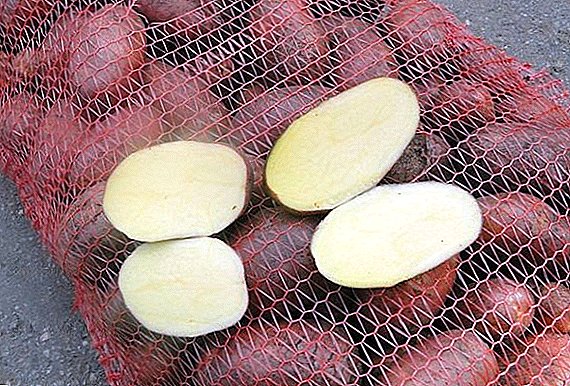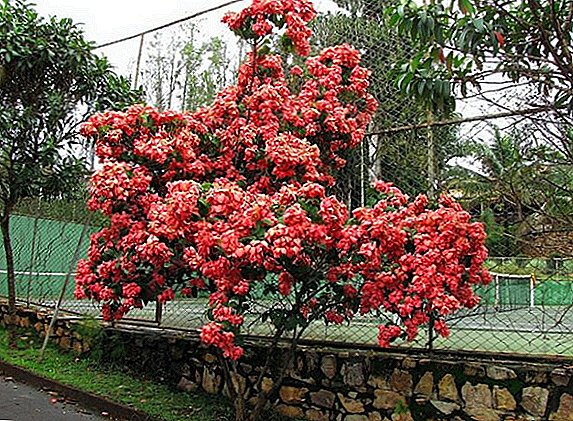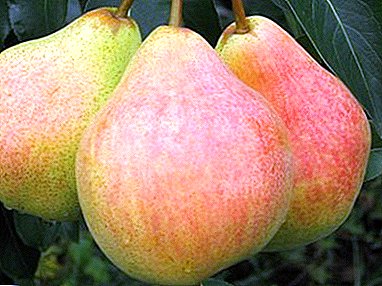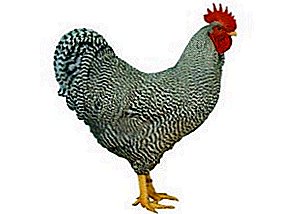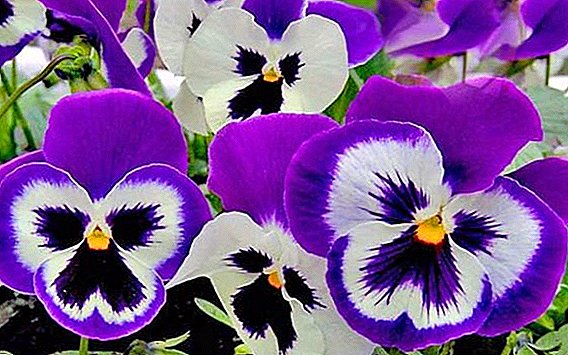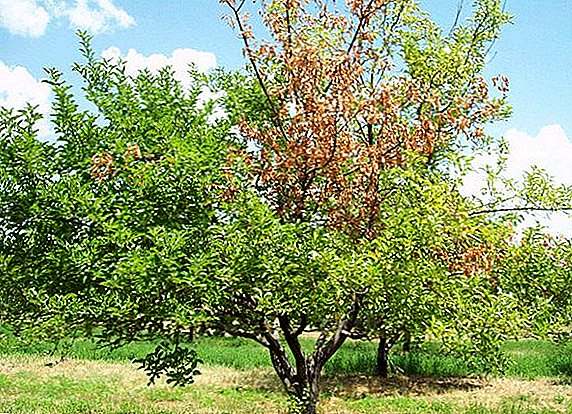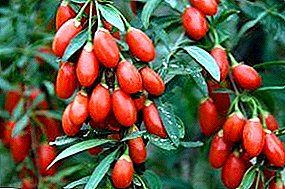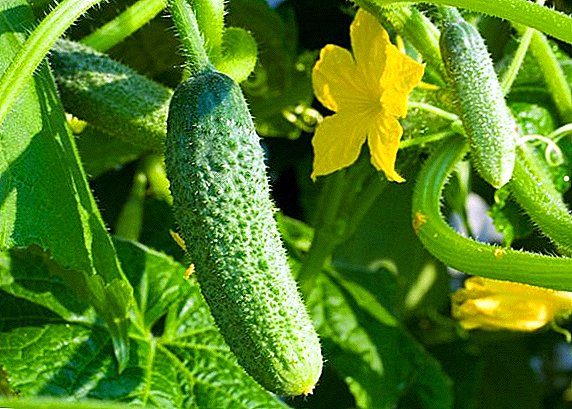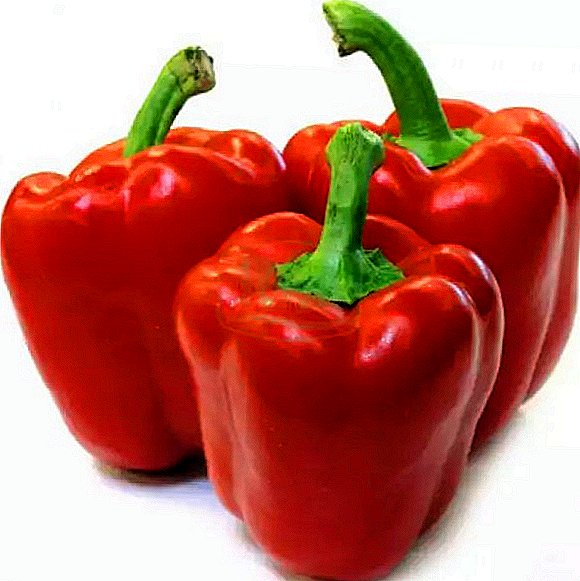 Pepper "Claudio F1", which description is familiar to all lovers of early ripe hybrids, is actively grown in our country. This variety of sweet pepper is popular with experienced and novice gardeners. In this article we will talk about this variety.
Pepper "Claudio F1", which description is familiar to all lovers of early ripe hybrids, is actively grown in our country. This variety of sweet pepper is popular with experienced and novice gardeners. In this article we will talk about this variety.
Variety description
"Claudio F1" - Bulgarian pepper, sweet. Is a hybrid. Bushes are semi-sprawling, powerful, can reach a height of about 70 cm. The leaves are medium or large, have a wrinkled surface. The fruits are large, their shape is similar to an elongated cube. Their skin is thick, shiny and smooth. From dark green color turn to dark red as they ripen. On one bush can grow up to 12 fruits. Peppers of this variety are fleshy, weighing about 200 g and wall thickness of 10 mm. 
Did you know? Sweet pepper contains more vitamin A than in carrots.
Growing conditions
This variety of sweet pepper prefers to grow in loose and light soil rich in organic matter and having a neutral reaction. This plant loves light and moisture. If there is little light, the bush will be drawn out, and the flowers will fall off. It is best to grow "Claudio F1" pepper after beets, carrots, cabbage, legumes (except beans) and pumpkin crops. You can not plant it next to cucumbers.
Check out also how to plan crops of vegetables correctly.Land for landing need to prepare well. Requires deep digging of the soil and removal of weeds, as well as the need to make basic fertilizers and liming.
Did you know? In our area, sweet pepper appeared in the XVI century. They brought it from Turkey and Iran.

How to plant pepper
To grow this variety of pepper, it is necessary to prepare seedlings in advance.
How to prepare seeds for planting
Basically, Dutch seeds do not need pretreatment. The manufacturer performs all the necessary procedures before packing the seeds. But you can hold them for 5 hours in hot water, the temperature of which should be 50 ° C, then put in a damp cloth for 3 days. Such preparation of seeds gives quick shoots.
Soil for seedlings
The substrate for growing seedlings from seeds should be loose and consist of humus, sand and garden soil. In this mixture, you must add ash and sawdust. 
Seeding technology
Seeds are usually planted in early March, immersing them 1 cm in the ground.
Important! It is necessary to adhere to the distance between the seeds of about 1.5 cm. It is impossible to sow closer, since the grown sprouts will create a shadow for each other.Then they are immediately watered. Capacity with seeds covered with a film to maintain the required level of humidity (about 70%). Until the seedlings appear, the containers can be left in any warm place where the temperature will be about 22 ° C. Light does not matter.
Seedling care rules
The first shoots usually appear on the 15th day after sowing. Then you need to make a pick. This is done so that each bush can develop its strong root system. This should be done carefully, without damaging the roots. Transplanted sprouts in separate forms. After that they are put in heat, where the daytime temperature is 26 ° C, and the nighttime temperature is not lower than 10 ° C. Seedlings are undesirable often watered, as can develop the disease "black leg". You just need to make sure that the substrate does not dry out. Sprouts should be watered with warm water (30 ° C). From cold water they will become weak, they will get sick and may die. In the room where the seedlings, the air should not be dry. Bushes need to be sprayed, and the room - to air, protecting sprouts from drafts. On the 10th day after the picking, you can conduct dressing using a solution of water with urea and superphosphate. 
Important! Before planting sprouts in the ground, their need to harden, taking out every day on the air in the solar time for a few hours.
Planting seedlings in open ground
At the end of May, when the air temperature will be around 22 ° C, you can start planting seedlings in open ground. It is best to do this in the morning or in the evening. The distance between the holes should be 50 cm, and between the rows should stick to 60 cm. Their depth should not differ from the depth of the seating capacity. Bush is not recommended to plant with bare roots. Therefore, together with the earthy clod, you need to lower the seedling into the hole and half fill it with fertile soil. Next, you need to water each seedling well, using a bucket of water in three holes. After the water is absorbed, cover the wells with earth to the top. The root neck should be at ground level. After planting, it is desirable to mulch the area with peat peat.
Read also about the cultivation of bitter varieties of pepper at home and in the garden.
Agricultural technology growing "Claudio F1"
To get a good harvest, you need to care for the bushes of pepper. Professionals recommend removing the central flower on each plant. Thanks to this action, the harvest will be greater. And also, to increase the yield, the bushes need to be formed into 3 stems, removing lateral shoots that are formed in a timely manner.
Soil care and weeding
Sweet pepper loves loosened earth. Therefore, you need to make sure that there is no earth crust. Thanks to loosening improves the flow of air to the roots. The first 14 days the pepper grows slowly, and it is undesirable to loosen the soil, as the roots are strengthened. Later, it is necessary to loosen the ground after watering, when it has dried, but the crust has not yet formed. This should be done no deeper than 5 cm, since the roots are in the upper layer of the earth. It is also desirable to carry out weeding, thereby getting rid of weeds. Spud need to pepper during flowering. 
Watering and feeding
Water the pepper should be once in 7 days, until it began to bloom. On 1 square. m use 12 liters of water. When the bushes bloom, watering is 3 times a week, using 14 liters of water. Water should be separated and have a temperature of 24-26 ° C. 14 days after the peppers are planted in the ground, it is fed for the first time. Used for this manure, chicken droppings, mixing with phosphate-potassium fertilizers. Or you can use mineral fertilizers: saltpeter, superphosphate, potassium chloride. The following feeding is carried out at the beginning of fruiting and during the formation of the fruit, increasing the dose of ammonium nitrate.
Important! If the fruits are small, you can feed the plant and the fourth time.

Pepper garter
Variety "Claudio F1" has very fragile shoots, and any careless movement can damage them, so you need to tie the stalks to the pegs.
"Claudio F1": advantages of variety
This variety has many advantages. The main characteristics of pepper "Claudio":
- resistant to diseases;
- unpretentious in growing;
- large-fruited variety;
- heat resistant;
- long stored;
- well transported;
- good taste;
- early maturing
- you can use fresh fruit and canned.

Read about growing chili peppers in the garden and on the windowsill.Pepper "Claudio F1" - variety reviews:
Galina, 48 years old: "I really liked the taste of this pepper. The germination of seeds just amazed - absolutely all the seeds sown. There was a bit of fruit on the bush, probably due to weather conditions."
Irina, 35 years old: "I have grown large fruits, which I was very pleased. I will now always plant only this variety."
Vladimir, 55 years old: "It is easy to grow this variety. The seeds quickly germinate, and the fruits grow juicy and fleshy. We use them for salads or eat fresh."
If you take a responsible attitude to planting sweet pepper "Claudio F1" and follow all the rules for care, he will please you with a good harvest.


